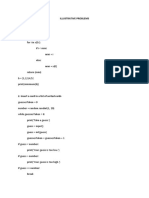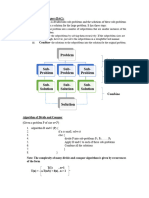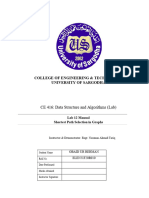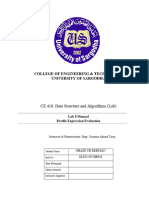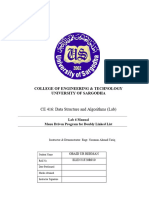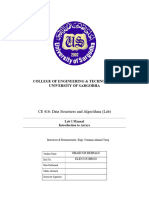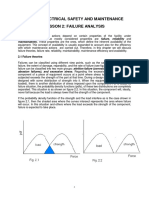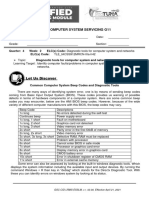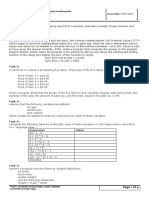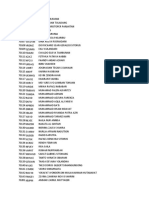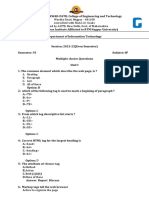0% found this document useful (0 votes)
64 views7 pagesDSA Lab 9
The document describes experiments on divide and conquer algorithms, including implementing quicksort to sort an array and the tower of Hanoi puzzle. It provides background on the algorithms, pseudocode for the solutions, Python code to implement the algorithms, sample outputs, and a rubric for assessing student lab work on understanding and applying the divide and conquer approach.
Uploaded by
obaid ur rehmanCopyright
© © All Rights Reserved
We take content rights seriously. If you suspect this is your content, claim it here.
Available Formats
Download as PDF, TXT or read online on Scribd
0% found this document useful (0 votes)
64 views7 pagesDSA Lab 9
The document describes experiments on divide and conquer algorithms, including implementing quicksort to sort an array and the tower of Hanoi puzzle. It provides background on the algorithms, pseudocode for the solutions, Python code to implement the algorithms, sample outputs, and a rubric for assessing student lab work on understanding and applying the divide and conquer approach.
Uploaded by
obaid ur rehmanCopyright
© © All Rights Reserved
We take content rights seriously. If you suspect this is your content, claim it here.
Available Formats
Download as PDF, TXT or read online on Scribd
/ 7

















